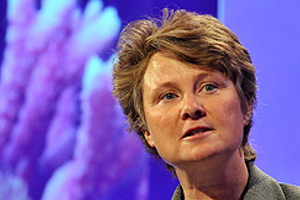Cities as Communities
For this week’s blog I decided to watch a video titled “Cities as Communities: Regenerative Community Design.” Mark Lakeman is the speaker in this video and he talks mostly about people living in communities taking their rights back to do what they want in their city. He gave many examples of this happening in Portland Oregon; where the people there are no longer just individuals living next to each other but instead a community unit that can get things done. He gave the example of a meeting place in the middle of a town (showed a postcard of this) and said that a community meeting place needs to be created by the people living there, as opposed to be generated as a product that we can consume; how most of our cities are created today. He talks also about zones, where there are living zones and working zones and they are far from each other. This makes us more reliant on transportation and since they don’t create a mass transport system we are required to buy cars to get from home to work and back. What stood out to me most was when Mark talked about us (the people in communities) do all of the work but believe that we have no power. The rest of his talk seemed to coincide with these thoughts that we need to understand that we do have power to make decisions in our cities. One example is when a community wanted to plant a series of fruit trees in a certain area that wasn’t being used for anything productive. At the time they announced they wanted to start planting these trees the community developer tried to stand in their way saying they did not have the permission to do so. At that time, they responded by saying that they were putting them in and not asking permission but asking for help if the city wanted to. They were able to plant their trees and the city went along with this plan. I really hope to be involved with a movement like this in the future. Anyone who lives in a city pays taxes that cover the expense to keep the city running. Therefore, we are the ones who ultimately own the cities we live in. We absolutely have the right to get together and make meetings places, community gardens, or as stated in the video community orchards if we want. Although I feel there is adequate meeting places in the city I live in, I feel that many of us depend on grocery stores to purchase most if not all our produce. I believe my community would benefit from a garden that we can all use and be involved with creating. I am hoping to speak with people in my community to see if this is something feel they would be interested in getting involved with and will try to keep my blog updated in the future with the progress.
Transition Town Movement
The second video I watched is the “Transition Town Movement” from Rob Hopkins. The video began with people explaining what transition is. The definition that I most relate to was when a woman explained that transition is the idea of thinking of our communities futures and what we would like to see with people being happy, living sustainably, and being involved with decision-making. The idea of transition is trying to figure out how to get to that idea of a perfect community. Transitioning has to happen in stages that way you can not only gain commitment of the followers but also come up with the best solutions by examining the fine details in the plan. It was explained that the biggest transition that needs to be made is from the inside. Anyone growing up in the United States has been brought up to believe that the best thing you can accomplish in your life is to be wealthy so that you can buy whatever your heart desires. This way of thinking is so embedded in our thoughts and actions that we can’t truly transition to a new way of thinking until we address this issue first. We need to understand that money doesn’t buy happiness and you aren’t a more successful person if you have the ability to consume more products than the next guy. Instead we need to build rich communities, ones in which people feel connected and you can rely on others for help just as they can rely on you. We need to get our sense of community back and really try to connect with others around us to come up with solutions to the problems in our lives, and not leave it to the so-called “experts.” The second stage of transition is deepening, and this is where you start becoming an organization. One group in Kilburn decided to plant an apple tree and various other vegetables at a train platform. When they initially asked if they could plant food there the city said they would prefer if they just planted flowers. After being persistent they found out that it was written in the code that they would be allowed to plant food there and that is what they did. One of the most important things that needs to take place after a group has success is to celebrate this success before jumping into the next project. These celebrations might encourage others to get involved in the transition and also is a way for people to see all of the hard work that they have put in. This video was very much related to the first video I watched for this blog and overall I feel encouraged to get involved and see what I can do to help in my local community.














